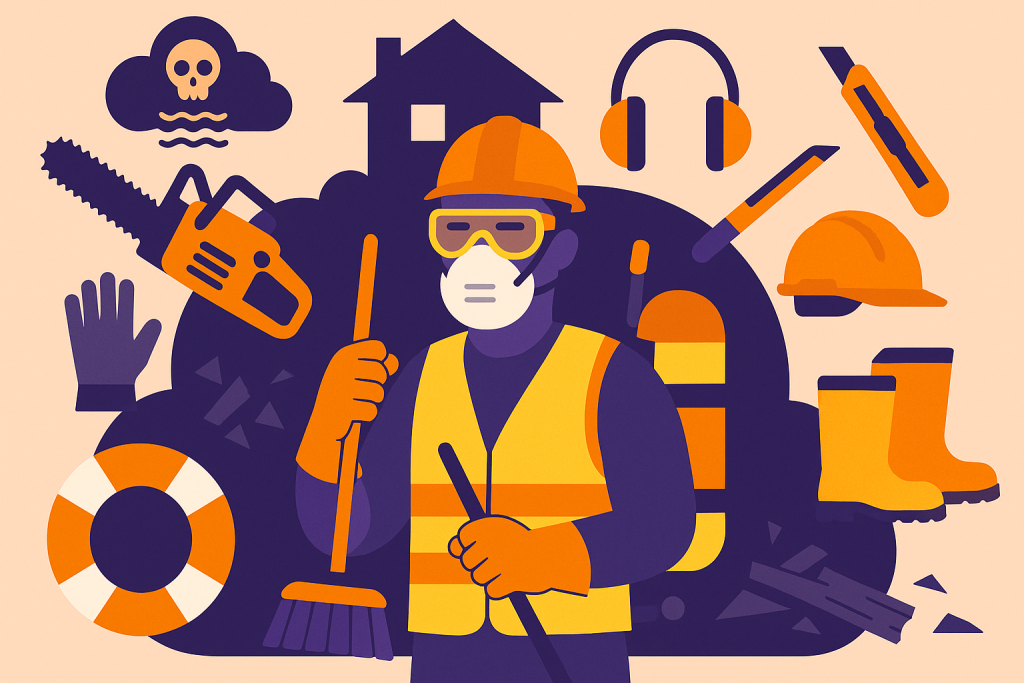
Working in disaster cleanup and recovery is essential — but it comes with serious risks. After hurricanes, floods, storms, or other disasters, workers face dangerous conditions that require strict safety precautions.
Knowing how to use Personal Protective Equipment (PPE) and understanding site-specific hazards is the first step to working safely.
Main Hazards During Disaster Cleanup
- Electrical hazards
- Floodwaters and water contamination
- Sharp debris (nails, metal, glass)
- Structural collapse
- Mold, asbestos, and dust
- Carbon monoxide from generators
- Slip, trip, and fall risks
- Exposure to hazardous chemicals
Essential PPE for Disaster Cleanup
✔️ Head Protection
- Hard hats — for falling debris, overhead hazards, or construction areas.
✔️ Eye and Face Protection
- Safety glasses or goggles — for flying debris, dust, and splashes.
- Face shields — when using chainsaws or handling large debris.
✔️ Hearing Protection
- Required when working near loud equipment like chainsaws or heavy machinery.
✔️ Hand Protection
- Work gloves — to prevent cuts, punctures, and contact with contaminated materials.
- Rubber/latex gloves — for handling wet or contaminated surfaces.
✔️ Body Protection
- Hi-visibility vests or garments — to stay visible in busy or low-visibility areas.
- Impermeable suits — for handling contaminated water, sewage, or hazardous materials.
- Life jackets or floatation devices — if working near or over water.
- Chainsaw chaps — when operating chainsaws.
✔️ Fall Protection
- Harnesses and lanyards for any work at heights over 6 feet.
✔️ Foot Protection
- Steel toe boots — for impact and puncture protection.
- Waterproof boots — for wet environments.
Respiratory Protection: Know When It’s Needed
- Dust masks (N-95) — for general dust or debris.
- Higher protection (P100 respirators) — if mold or asbestos is present.
- Chemical cartridge respirators — for chemical exposure.
- Important: Standard respirators do NOT protect against carbon monoxide from generators.
➡️ Employers must ensure proper fit testing, training, and medical clearance for anyone using respirators.
Sanitation and Hygiene Are Critical
- Always wash hands after working and before eating, drinking, or smoking.
- If there’s no running water, use hand sanitizer.
- Proper hygiene helps prevent infections and disease during cleanup work.
Key Reminders for Safe Disaster Cleanup
- PPE is often the last line of defense — engineering controls (like barriers or ventilation) are better but not always possible in disaster zones.
- Workers must be trained to recognize hazards and use PPE correctly.
- Inspect PPE regularly. Learn how to put it on, remove it safely, and know when to replace it.
Stay Safe. Stay Prepared.
Disaster cleanup is critical work that helps communities recover. With the right precautions, training, and equipment, you can protect yourself and your team from serious injuries and health risks.